The California roll is the ultimate American sushi roll. This post covers the ingredients, history, and nutritional info of this modern classic. Popular variations and recipes are discussed, as well.
What is a California Roll?
The California roll is a crab and avocado-based sushi roll (maki) with rice on the outside and nori seaweed inside. This inside-out design (uramaki) was the first of its kind. It was developed this way because North Americans generally didn’t enjoy the appearance and texture of nori seaweed.
Besides crab and avocado, many other ingredients are practically standard for the California roll.
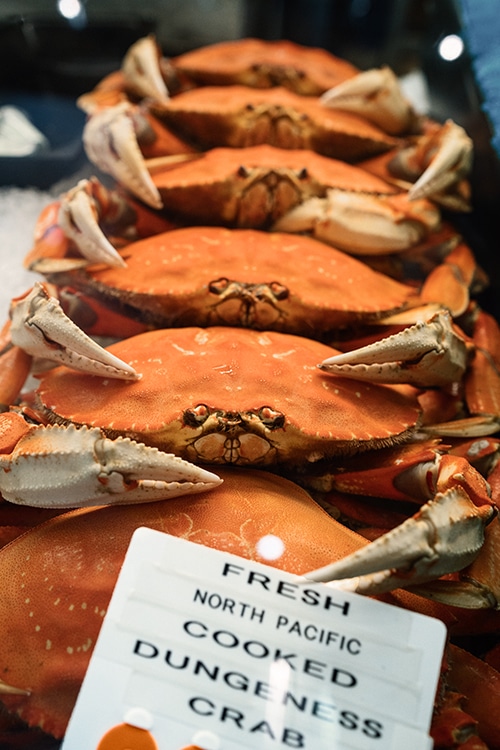
California Roll Ingredients
There are many ingredients that one might find in a California roll, but crab and avocado are the most important. Sushi rice and nori seaweed are also standard.
Originally, real crab was used to make this roll, but today it’s more common to find imitation crab (kanikama). Kanikama is a type of kamaboko that often contains no crab at all. King, Dungeness, and blue crabs are all delicious premium options for a California sushi roll.
Other common ingredients in California sushi are cucumbers, Japanese mayonnaise, tobiko or masago, and sesame seeds.
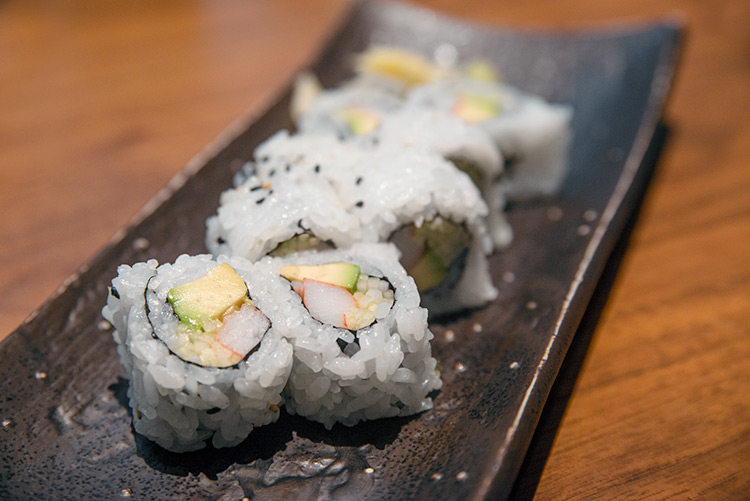
Cali Roll Variations
There are few rules with Western-style sushi rolls, and the California maki is no different. Below we discuss some of the most common variations you’re likely to encounter.
Spicy California Roll
The spicy California roll is probably the most popular variation of this classic sushi roll. The two most common ingredients used to add spice are either chili pepper powder (ichimi togarashi) or sriracha. These are typically mixed with kewpie mayo and the crab.
Occasionally, you may find spicy California maki made with bits or slices of jalapeno.
Crunchy California Roll
After the spicy Cali roll, the crunchy version is probably the next most popular variation. This is simply a deep fried California roll or one that contains fried tempura flakes. Another common name is the crispy California roll. And of course, there’s on single way this maki is prepared.
Sometimes the entire roll will be tempura-battered and fried. It’s also common to find crunchy California rolls made simply with the addition of tempura flakes.
California Hand Roll
A California hand roll, or California temaki, is a fun variation where the ingredients are wrapped with nori in a conical shape. Instead of being cut into bite-sized pieces with the rice on the outside, the roll is one large piece that is held in your hand.
The temaki style sushi roll is easier to make at home and is also portable.
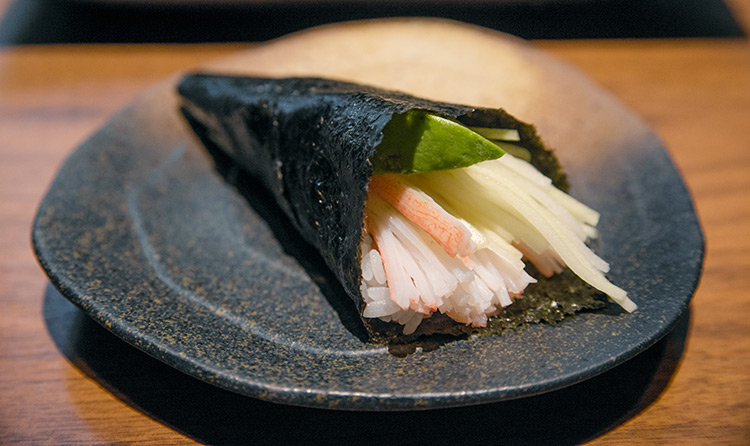
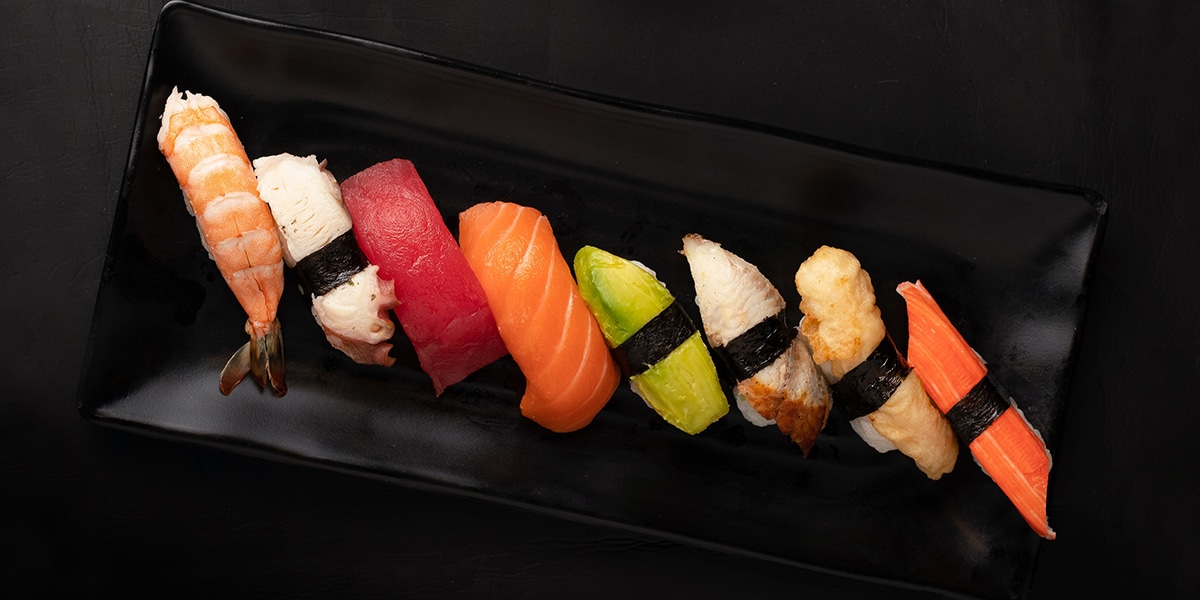
Level-up your sushi game with the definitive sushi and sashimi guide!
The Contentious History of the Cali Roll
The ubiquitous California sushi roll was a gamechanger. Its inside-out design and use of avocado ushered in a whole new category of maki sushi where anything goes.
But the origin of this iconic crab and avocado sushi is murky.
Two Innovative Chefs from LA
For a long time, the credit for the California roll’s invention was focused on two sushi chefs from Los Angeles: Ichiro Mashita and Ken Seusa.
Ichiro Mashita worked at Tokyo Kaikan in Little Tokyo. Sometime in the 1960s, he started using avocado as a replacement for toro, which wasn’t always available. But his American diners were still picking off the nori from the outside of his maki sushi. So he decided to make the roll inside-out with the rice outside to hide the seaweed. This was supposedly the genesis of the uramaki.
The uramaki can hold more ingredients than traditional sushi rolls. And at some point, he began adding real crab.
Was this the first California roll?
Around the same time that Mashita-san was turning sushi traditions inside-out, Ken Seusa of Kin Jo restaurant was experimenting with many Western ingredients. And he also began making uramaki with crab, avocado, and cucumber. His California roll caught on and he was given the credit for its invention by Gourmet magazine in 1980. A year later, a New York Times food critic lambasted the non-traditional maki which further increased its fame.
For a long time, Mr. Seusa was given the credit for creating this iconic sushi roll. But the tides eventually turned and Mashita-san was typically viewed as its originator.
But the story doesn’t end there.
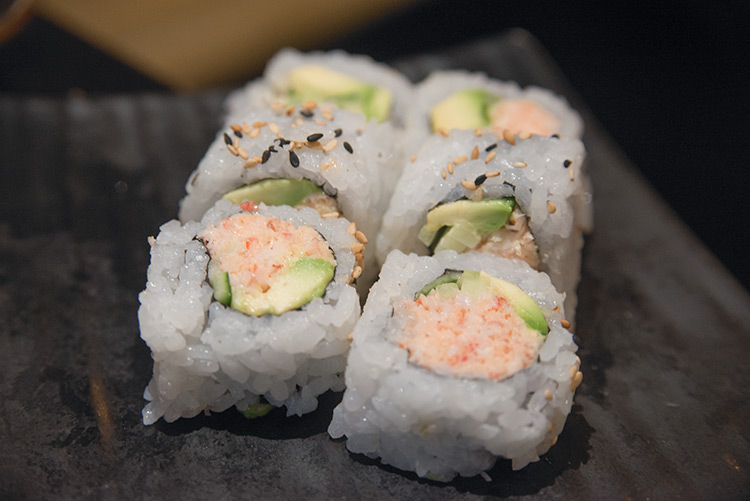
The California Roll: A British Columbia First?
More recently, a third chef has stepped up to claim he invented the California maki. Hidekazu Tojo of Vancouver said he did so in 1971. He was also trying to appeal to Western tastes and their aversion to raw seafood. It didn’t help that he struggled to find super fresh fish he could serve that day.
Tojo-san would settle on fresh crab, which was cooked and more appealing to his guests. And like the two chefs from LA, he began hiding the nori seaweed in a similar appeal to the Western palate. His original version may have included spinach, and when he started adding avocado is unclear.
Regardless, his crab-based uramaki was a hit. His guests from southern California were especially fond of it and he claims the roll was named in honor of them.
Picking a Winner
Ultimately, one of these men likely created the California roll. But unfortunately, we’ll probably never know who was first.
Each chef arguably deserves credit in what will always be a stalemate. Fundamentally, they were all breaking tradition to make sushi that would be more appealing to the American palate.
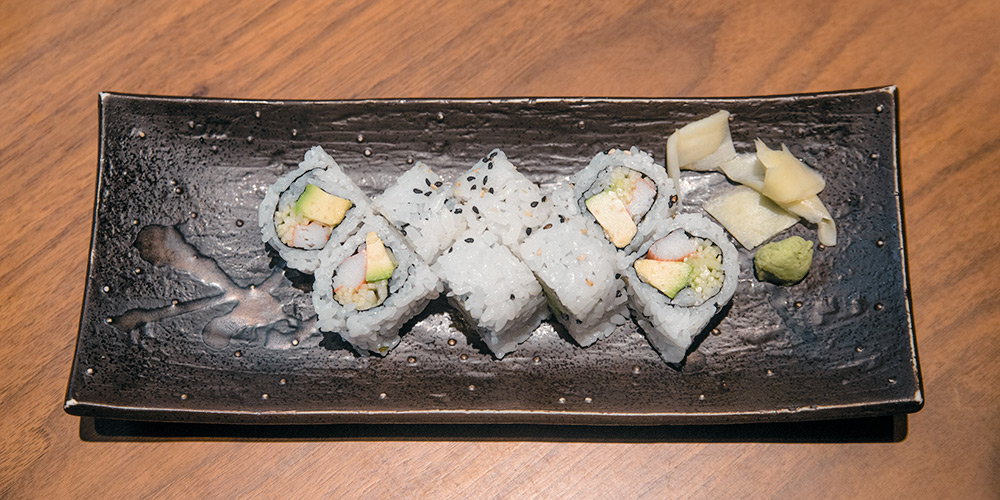
California Roll Recipe
There’s no one way to make a Cali roll, but we’ve scoured the internet to find our favorite.
How to Make California Rolls
The No Recipes video below is a great intro into the details of pulling off this classic at home.
California Roll Dietary Information
The ingredients in a California sushi roll vary, as does its size. Still, we think it’s useful to have a general understanding of the nutritional and dietary information about this type of sushi.
Nutritional Break Down
Since all Cali rolls contain crab (or imitation crab) and avocado, we’ll begin with them.
Many types of real crab can be used to make this roll. Generally, they have similar nutritional values. Crab is very low in saturated fat and carbohydrates, high in Omega-3 fatty acids, and is a good source of several important vitamins and minerals. It does have high levels of cholesterol and sodium, however.
Imitation crab, or kanikama, is highly processed. It also rarely contains any crab. It has less fat, protein, and beneficial vitamins and minerals than real crab. Kanikama also has more carbs. The sodium content is less than real crab but is still high.
Avocado is a fairly healthy source of fat. It also contains no cholesterol and a very low amounts of sodium.
Cucumber isn’t always included in this roll, but it provides a satisfying crunch. It’s also loaded with important vitamins and minerals.
A Closer Look
Below we’ll break down a typical Cali sushi roll made with 40 grams of crab or kanikama, 30 grams of avocado and cucumber, a 1/2 sheet of toasted nori, 60 grams of seasoned sushi rice, and 1.5 grams of Kewpie mayo. These stats are only estimates based upon an average-sized roll with the most common ingredients.
Real Crab California Roll
- 237 calories
- 7.9 g fat
- 12.25 g protein
- 22.4 g total carbohydrates
- 9 g sugar
- 27.1 mg cholesterol
- 879 mg sodium
Imitation Crab California Roll
- 237 calories
- 7.4 g fat
- 6.75 g protein
- 28.9 g total carbohydrates
- 11.5 g sugar
- 11.1 mg cholesterol
- 769 mg sodium
We sourced much of our nutritional information from the US FDA, Self’s Nutritional Data, and Eat This Much.
Is the California Roll Cooked?
Both crab and imitation crab is cooked prior to being used in a California roll. The rice will be cooked, as well. The vegetable components of the roll are served raw. Sometimes masago or tobiko fish roe is used in this sushi roll, and both of these ingredients are cured.
Excluding the addition of atypical ingredients, California maki are safe to eat for those looking to avoid raw seafood.

Brad Smith
I fell in love with Japanese cuisine nearly two decades ago and soon landed my first Japanese restaurant job. Many years later, I created this site to geek out on Japanese food and beverage.
I love learning and my professional certifications include the J.S.A. Sake Diploma, Certified Sommelier (CMS), Certified Sake Advisor (SSA), Certified Shochu Advisor (SSA), Certified Specialist of Spirits (SWE), and Certified Beer Server (CCP).
Check out my about page to learn more.
